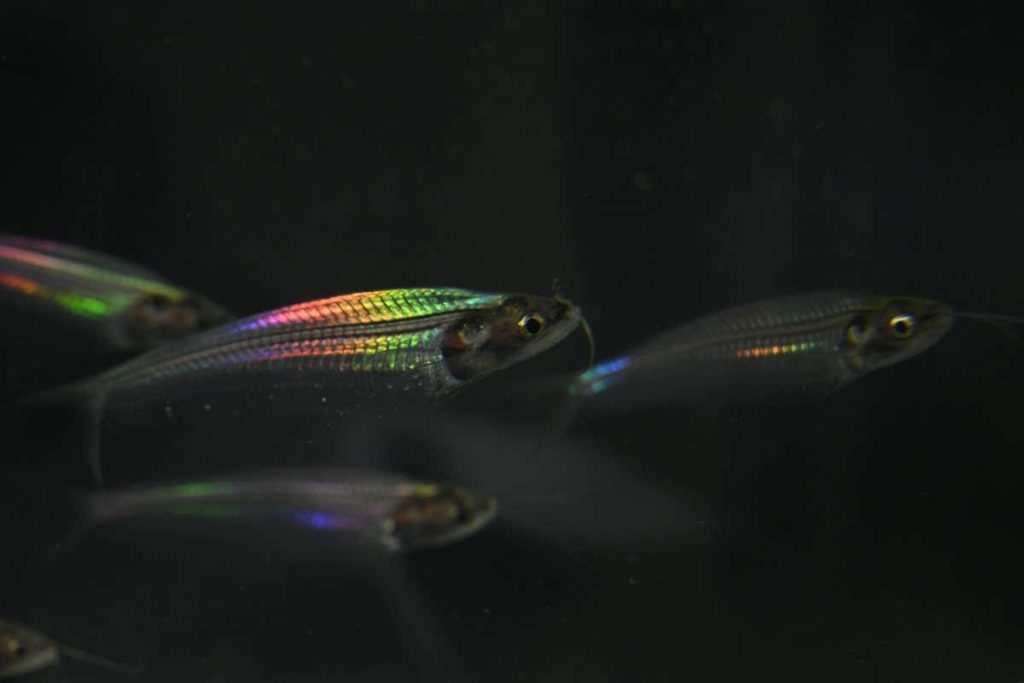Iridescent ghost catfish
Nan Shi, Xiujun Fan, and Genbao Wu.
We now know how ghost catfish get their rainbow shine. These small fish, popular for home aquariums because of their near-complete transparency, get their iridescence from fibres in their muscles, unlike many other species that shimmer.
Aside from their heads and spines, ghost catfish (Kryptopterus vitreolus) are almost completely transparent. When light shines through their bodies, they take on a colourful iridescent shimmer despite having no pigment in the transparent parts of their bodies. Qibin Zhao at Shanghai Jiao Tong University in China and his colleagues examined the fish and samples of their different tissues to figure out how that iridescence arises.
“Different from many of the fish species that have been identified to have structural colours in reflection, the structural colour of the ghost catfish only appears in transmission, which is unusual,” says Zhao. Those other fish tend to get their shimmer from photonic structures – shapes that change the colour of light as they reflect it – in their scales and skin, so that is how we assumed ghost catfish got their shine too.
Advertisement
“Actually, we spent quite some time at the beginning looking for photonic structures in the skin, and we started to study the muscle only for the purpose to explain why it is so transparent, until after several months we realised that it is the muscles that has caused the diffraction colours,” says Zhao. The researchers found that the colours come from muscle fibres called sarcomeres, which mediate the contraction and relaxation of muscles.
When light shines through the fish, these sarcomeres act something like prisms, breaking the light into its constituent colours. While these structures may occur in other types of fish too, we can only see them in ghost catfish because the fish are so small – just a few centimetres long – and so transparent.
In the wild, this iridescence may be useful for communication with other fish or to hide the catfish’s shadows from deeper-swimming predators, Zhao says. Other transparent fish, such as eel larvae and icefish, may get their shine in similar ways.
Topics:

